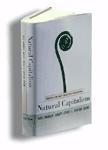 A few years back I started reading Natural Capitalism. I wrote a post about the first chapter and vowed to come back to the book “soon.” Geologically speaking, it’s been the blink of an eye. In human terms, a wee bit longer. The book isn’t inordinately long, but after coming back to it after many months, I find the second chapter a rich source of information, ripe for reflection.
A few years back I started reading Natural Capitalism. I wrote a post about the first chapter and vowed to come back to the book “soon.” Geologically speaking, it’s been the blink of an eye. In human terms, a wee bit longer. The book isn’t inordinately long, but after coming back to it after many months, I find the second chapter a rich source of information, ripe for reflection.
Natural Capitalism is both forward-thinking and innovative despite its age. Much like his Ecology of Commerce, Hawken melds the everyday and the natural world. He and his co-authors demonstrate the feasibility of efficient, viable systems that can be implemented now. This book, published in 1999 could have been written today. While more work has been done to make the world more “sustainable,” much of what is discussed in the second chapter has failed to penetrate into mainstream business practices in the US.
With this in mind, there are several points I want to touch on in the second chapter. As a quick reminder, Paul Hawken co-authored the book with efficiency gurus Amory and Hunter Lovins. The second chapter begins as an homage to super efficient automobiles, so-called “Hypercars.”. These vehicles are not only lightweight (thus reducing the amount of energy needed to power them) but they also run on clean energy like hydrogen. What seems like an ardent argument for efficiency morphs into a plea for community development.
The most surprising aspect of the second chapter was the ending. In a book dedicated to capitalism, albeit one in line with ecological constraints, the final portion looks at community. It shouldn’t have come as a surprise, but given the focus on hypercars in the beginning, I got the sense that there was little place for a discussion about sidewalks and bike trails. I was wrong.
From Portland, Oregon and the neighborhood grocery store to European city planning with wider sidewalks and more bike lanes, cities were (and still are) being reshaped to consider non-motorized traffic. In order to reduce vehicular congestion, the authors suggest the following solutions:
- Make parking and driving bear their true costs.
- Foster genuine competition between different modes of transportation.
- Emphasize sensible land use over actual physical mobility – a symptom of being in the wrong place.
These three ideas have yet to fully take hold. However, cities like London have implemented higher toll rates for driving in the city, thereby decreasing traffic and allowing pedestrians to roam more freely.
[Image source]

